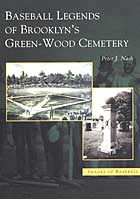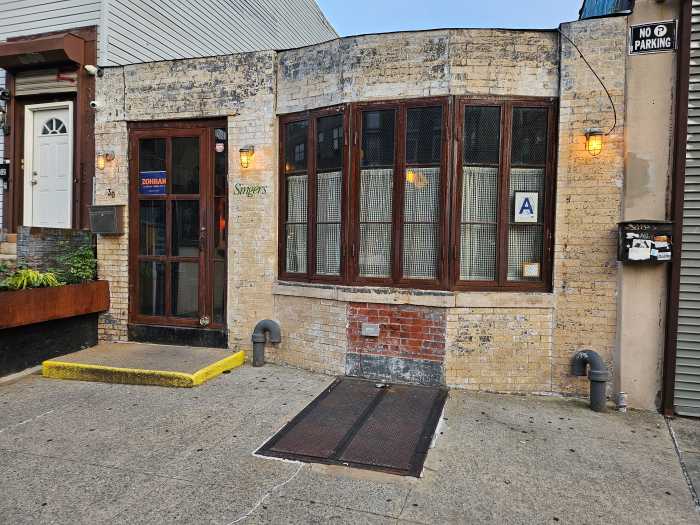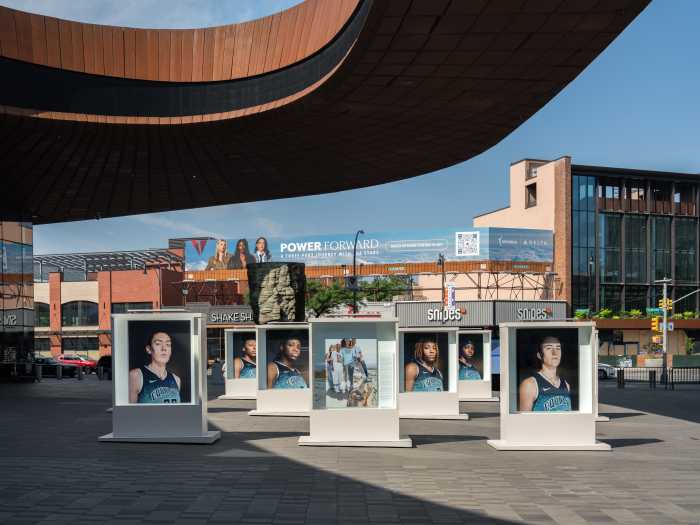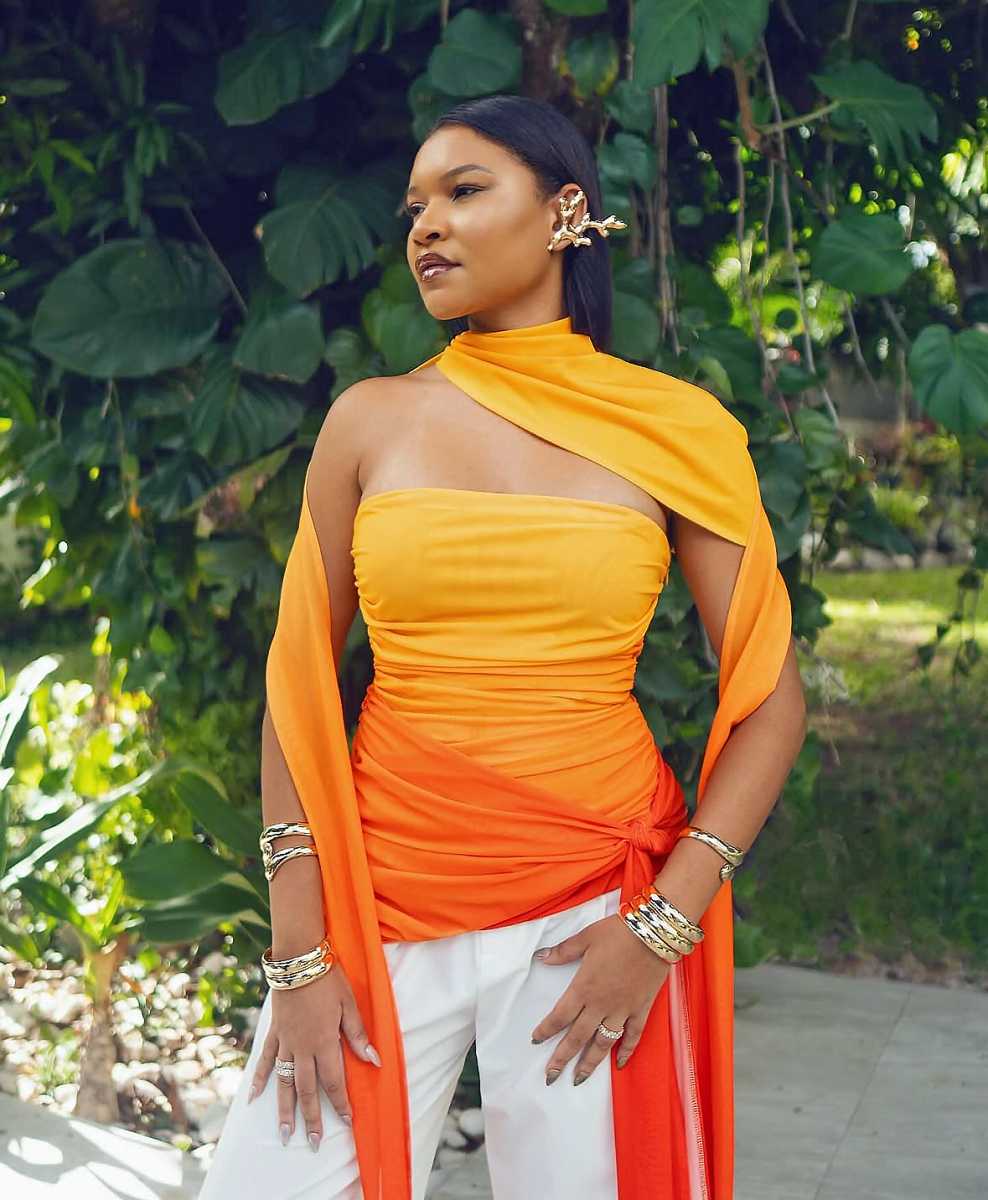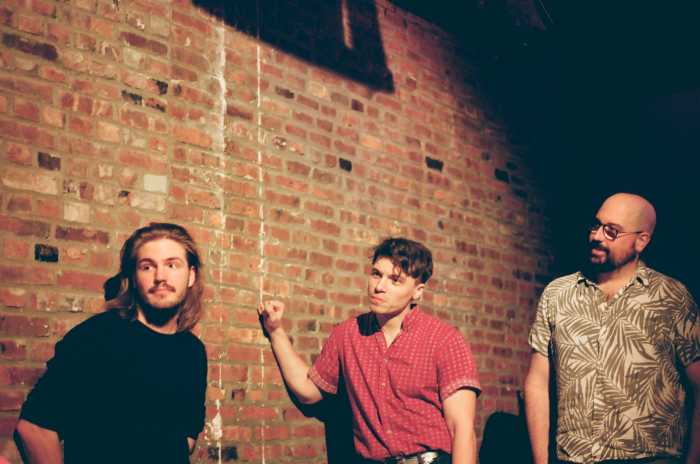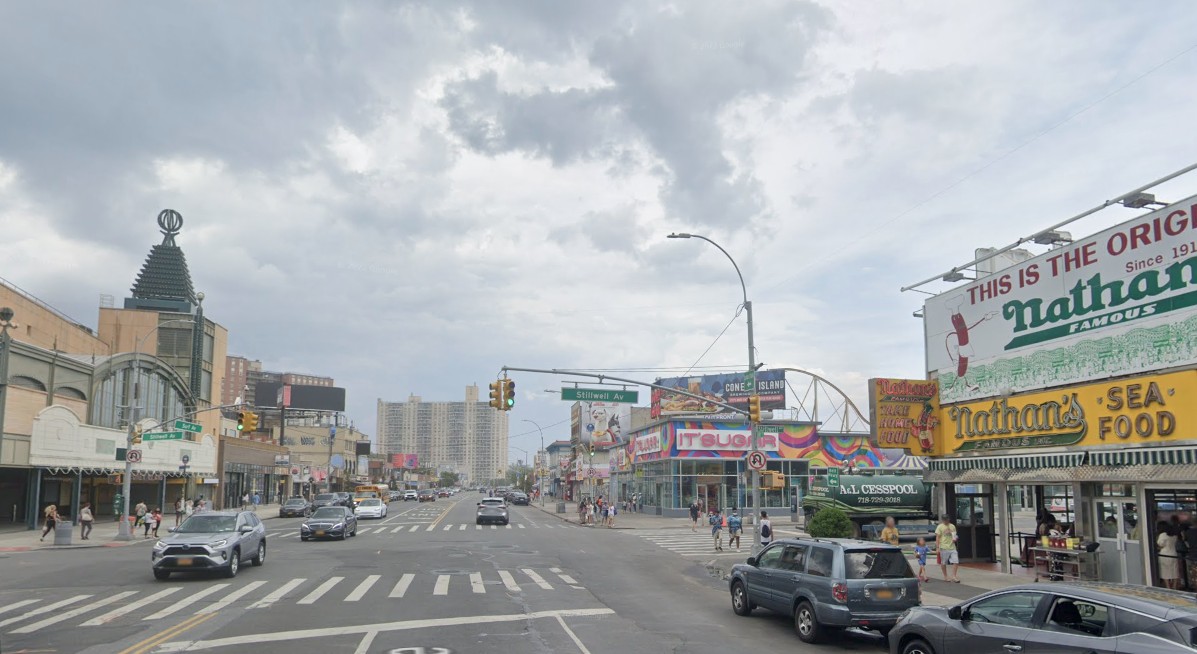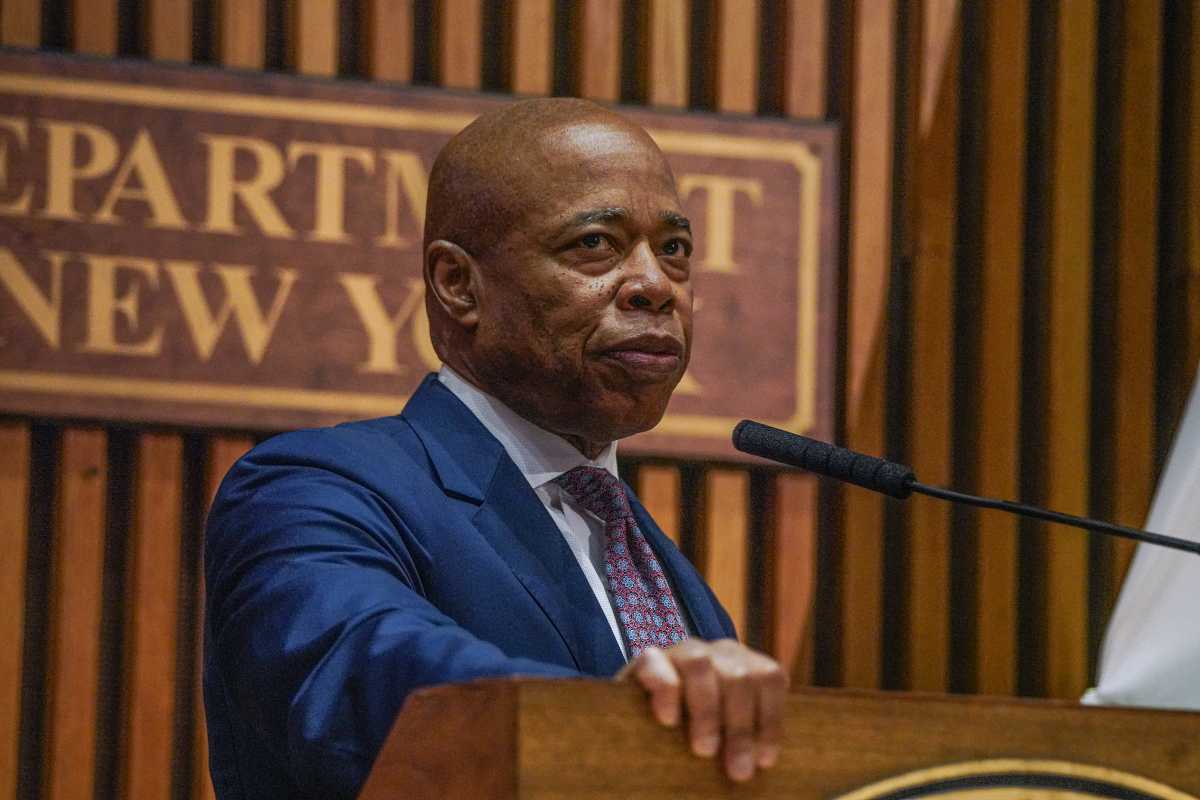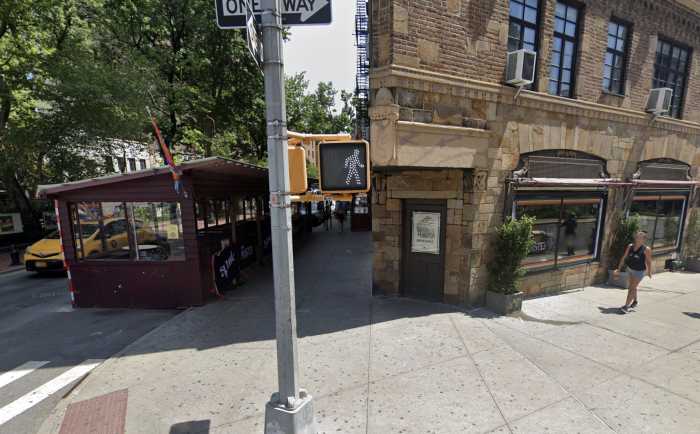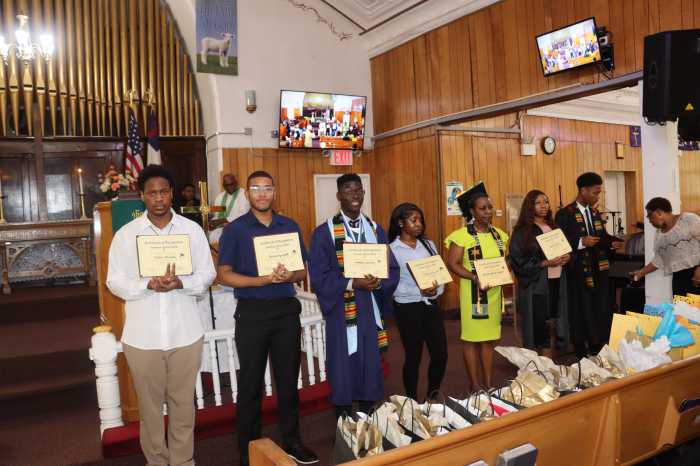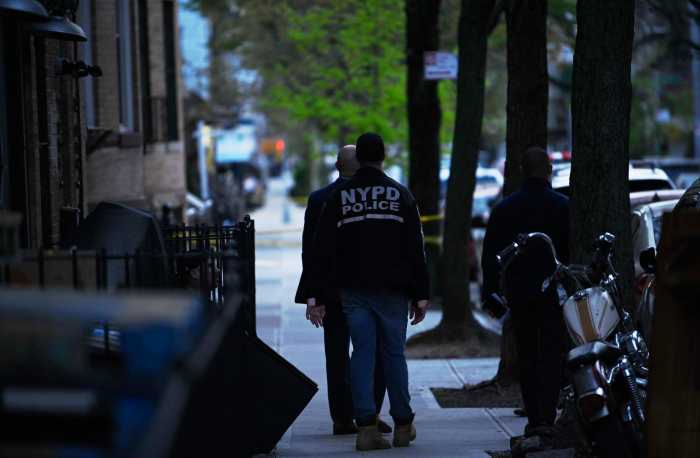For Bishop Ford High School graduate and
former hip-hop star Peter J. Nash, baseball’s original Hall of
Fame can be found right here in Brooklyn – at Green-Wood Cemetery.
In his new book, "Baseball Legends of Brooklyn’s Green-Wood
Cemetery" (Arcadia, 2004) Nash, a member of the Society
for American Baseball Research and former member of ’90s rap
trio 3rd Bass points out that many of the game’s pioneers and
architects from the mid-1800s are not only buried in the cemetery,
but some demanded that it be their final resting place.
"In his will, [Brooklyn sportswriter and ballplayer] Henry
Chadwick reminded his boss, Albert Spalding, that he promised
to purchase him a plot in Green-Wood Cemetery," Nash told
The Brooklyn Papers in a telephone interview from his home, appropriately,
in Cooperstown, NY. "It’s no coincidence that he wrote the
will a few days after attending his sister’s funeral, who was
buried about 50 feet from James Creighton, the first baseball
player to have a memorial erected in his honor."
The game’s first true star, Creighton died tragically in 1862.
(The myth of the day would have you believe he expired after
crossing home plate following one of his mammoth home runs.)
In his honor, his teammates from the Excelsior Club in South
Brooklyn erected a granite obelisk with a baseball motif, including
bats, balls and a score book.
"It became baseball’s first tourist attraction," Nash
said. "During the Washington Nationals’ tour of New York
in 1866, Chadwick, known as the "Father of Baseball,"
took both his Excelsiors and the Nationals on a trip to see the
monument. Reports of the time say players took grass from the
gravesite.
In time, many of those long-forgotten ballplayers – most of whom
paid fees to play for men’s clubs in Manhattan and Brooklyn –
ended up in Green-Wood. Some lie in still-unmarked graves while
others, like Creighton, have baseball-inspired monuments.
"Three of baseball’s true pioneers – Duncan Curry, William
Wheaton and William Tucker, who wrote the rules of play for the
New York Knickerbockers club – are buried there," Nash said.
"In fact, Curry’s monument proclaims that he was the ’Father
of Baseball’ and the ’First president of the Knickerbocker Baseball
Club, the first ball club ever organized.’"
But it was the monuments to Creighton and Chadwick that Nash
believes were the models for the monuments to Miller Huggins,
Lou Gehrig and Babe Ruth at Yankee Stadium and, subsequently,
the Baseball Hall of Fame’s plaques.
"If you look at Creighton’s monument, it’s almost the shape
of the plaque at the Hall of Fame," he said. "The Hall
of Fame opened in 1939, and the first [Yankee] Stadium monuments
were dedicated in 1930. But before them, the most baseball-related
monuments were found in Green-Wood."
Nash said his interest in baseball players at Green-Wood was
piqued in 1982 when, as a freshman at Bishop Ford, he read an
article by Bill Ivory on the burial sites of famous baseball
players. Subsequently, he was taken on a tour of Green-Wood featuring
a stop at Chadwick’s grave by his English teacher Ralph Ciminetti.
Nash dedicated his book to the teacher, and to his father, Bishop
Ford President Raymond P. Nash.
After graduating in 1985, Nash went on to Columbia University
where he hosted a hip-hop radio show. That led to the creation
of the popular rap group aptly named "3rd Bass," where
he was known as "Prime Minister Pete Nice." The group
released three albums ("The Cactus Album," "Cactus
Revisited" and "Derelicts of Dialect"), sold millions
of records and received heavy airplay on MTV between 1987 and
1992.
After 3rd Bass broke up, Nash, along with 3rd Bass alum Daddy
Rich, released the album, "Dust to Dust." He then left
the business and settled in Cooperstown in the mid-’90s.
In researching his book, Nash, 36, spent seven years reading
through old copies of The Brooklyn Eagle and the Brooklyn Times
at the library, as well as other publications like the New York
Clipper, where he found box scores, game reports and interviews.
Additionally, he walked the grounds of Green-Wood, snapping pictures
of players’ gravesites while locating those whose were unmarked.
"I tracked down over 200 baseball players and figures that
are in Green-Wood, dating from 1840," he said. "Of
them, I know of 40 that have unmarked graves."
Nash, who’ll be hosting a walking tour of the baseball gravesites
on April 4, said that one of the "side projects" that
came with writing the book was to get tombstones for those unmarked
graves.
In the meantime, he hopes to prove false another myth: that baseball
was invented in Cooperstown.
"Even the Hall of Fame would agree that the invention of
Abner Doubleday and Cooperstown as the birthplace of baseball
is a myth," he said. "It’s really taken on a life of
it’s own."
Ironically, according to Nash, it was Spalding, Chadwick’s boss
at the Spalding League Guide and the man who eventually bought
Chadwick’s lot at Green-Wood, who perpetrated the lie when he
hired a "commission" to find the true origins of baseball.
Spalding, who wanted to prove that baseball was a wholly American
game, printed his finding in 1908 that Gen. Abner Doubleday invented
the game in Cooperstown in 1839.
With that, the men of Brooklyn, Manhattan and Hoboken who helped
transform the British game of rounders into baseball were virtually
wiped from the history books.
"A lot of these guys really were the true baseball pioneers,"
he said. "But their careers have been glossed over because
of the whole Cooperstown myth. Ask anyone walking down the street
in Brooklyn, ’Where was baseball invented?’, and they’ll probably
tell you ’Cooperstown.’ But Brooklyn could probably lay a better
claim to it."
The proof, according to Nash, is buried in Green-Wood cemetery.
"Baseball Legends of Brooklyn’s
Green-Wood Cemetery" (Arcadia, $19.99) by Peter J. Nash
is available for purchase at Green-Wood Cemetery office. "The
Baseball Pioneers Walking Tour," hosted by Nash, will be
held April 4 at 1 pm at Green-Wood. Meet at the cemetery main
gate at Fifth Avenue at 25th Street in Sunset Park. For more
information, call (718) 788-7850.


